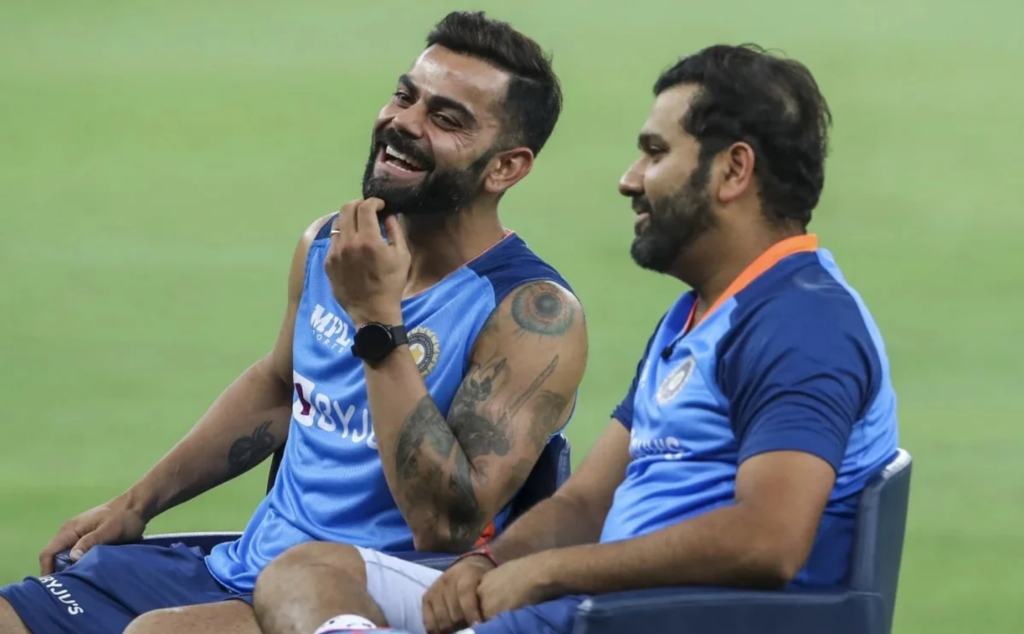
Big WT20 Question: If Rahul opens, Kohli plays at No. 3, who to drop from middle order?
Just a year ago, it seemed unimaginable to question Virat Kohli’s place in the Indian team. Kohli, though fit and available, finds himself in a unique situation for the first time in a decade, with discussions arising about his spot in the playing eleven within cricketing circles. The T20 World Cup in the UAE last year was a debacle, attributed largely to India’s outdated batting approach at the top of the order, resulting in runs scored at an inadequate pace.
Debates emerged on whether KL Rahul, Rohit, and Kohli were the ideal choices for No. 1, 2, and 3 in the shortest format, with responses from various quarters leaning away from affirmation. Now, nearly 10 months later, as another edition approaches, the Indian team management faces the same dilemma. If India sticks to its top three in the Asia Cup and the T20 World Cup, one of the three other top T20 performers – Rishabh Pant, Suryakumar Yadav, and Dinesh Karthik – might struggle to secure a place in the playing XI.
Pant brings the ‘x-factor,’ Suryakumar is a bona fide 360-degree hitter, and Karthik is a designated finisher. The crucial question arises: Can India afford to drop any of the three to accommodate Kohli or Rahul? This remains an important query without a definitive answer thus far.

Non-negotiable positions as all-rounders for Hardik Pandya and Ravindra Jadeja, coupled with the requirement of at least four specialist bowlers, leave room for only five specialist batters. The dilemma persists – who to drop? While Rahul and Kohli aim to reclaim their longstanding positions, a looming question arises about the viability of their roles in the T20I first XI.
Since the T20 World Cup last year, Kohli has played only four T20 matches in nine months, scoring 17, 52, 1, and 11. Despite the champion batter’s inconsistent form, the selection committee, led by Chetan Sharma, considers this a small sample size to make a definitive decision.
The broader concern is whether the team management will allow Kohli to play his traditional game of building the innings and accelerating after settling, given the evolving philosophy that emphasizes aggressive batting from the outset. This change is evident in Rohit’s adjusted game upfront, scoring at an impressive strike rate of 145 in 16 T20Is since the England series.

In this transformed approach, Pant and Suryakumar Yadav have served as opening partners, displaying comfort in their new roles. Deepak Hooda, with his immense talent, has also made an impact, scoring a hundred as an opener, albeit against minnows Ireland. Although not a starter in the upcoming Asia Cup, Hooda’s off-breaks and steady fielding keep him in contention.
Addressing the ‘KL’ conundrum, Rahul’s rushed return for the Zimbabwe tour raises concerns about his readiness for the high-stakes game against Pakistan in the Asia Cup on August 28. Despite Rahul’s stellar T20 numbers, the team’s evolving philosophy, emphasizing Powerplay batting, poses a challenge.

The dilemma extends to the choice between Pant, Suryakumar Yadav, and Dinesh Karthik. Pant’s T20I strike rate of 126-plus across 54 games might raise statistical concerns, but the significance of consistency and the potential for a game-changing moment in big tournaments should not be overlooked.
Suryakumar’s inclusion is justified after his remarkable performance in Nottingham, displaying finesse in various shots. As for Karthik, he acknowledges his high-risk game, promising good days on Australian tracks with less lateral movement and even bounce.
In conclusion, the question of where this leaves Kohli and Rahul remains complex and without a straightforward answer. The team faces a delicate balancing act between experience and adaptability, between the established and the emerging, as it navigates the dynamic landscape of T20 cricket.